Date published: 5 September 2025
The first batch of ‘DAMPs’ need to be with the CAA for approval by the end of the business day, 30 September 2025.
Who?
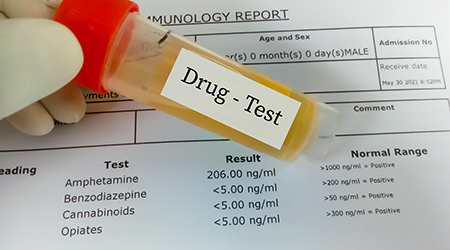 A ‘DAMP’ organisation is one where any of its staff are involved in safety-sensitive activities – like piloting or engineering.
A ‘DAMP’ organisation is one where any of its staff are involved in safety-sensitive activities – like piloting or engineering.
The first DAMP operators expected to submit their plans are approximately 67 organisations in:
- Part 115 – Adventure aviation
- Part 119 – Air operators – 121 and 125 airline air operators
- Part 145 – Aircraft maintenance organisations – supporting 121 and 125 airline air operators
- Part 139 – Tier 1 security-designated certificated aerodromes
- Parts 171 and 172 – essentially, Airways Corporation of New Zealand Ltd
- Parts 173 and 175 – Instrument flight procedure service organisations (Airways International – Aeropath) and aeronautical information service organisations (Airways International – Aeropath)
The CEO of each organisation submitting a DAMP is the person held responsible for its contents and for making sure what it says the organisation will do, gets done. That job can be allocated to someone else, but the CEO remains accountable.
How?
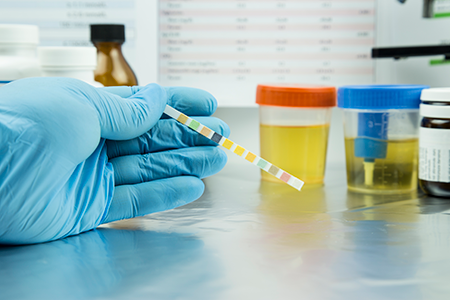 If you’re struggling with what’s required in a drug and alcohol management plan, the CAA has provided a template DAMP (see links at the end of this article).
If you’re struggling with what’s required in a drug and alcohol management plan, the CAA has provided a template DAMP (see links at the end of this article).
It’s fine to adjust the DAMP template to suit your organisation’s circumstances, as long as the basics are noted, like specifying which drugs will be tested for.
As with any other application to the CAA, it’s vital that, for a quick turnaround, the organisation submitting the DAMP must have followed all the instructions on how to do so, to the ‘T'.
“Otherwise we’ll have to send the documentation back for completion or improvement,” says Bobbette Odell, who’s overseeing the process for receiving the plans.
“It’s worth checking that everything is complete and accurate,” she says, “because then it can go straight to the certification team for assessment.”
Another good reason for making sure all the required documentation is in order, is that the CAA’s approval of your DAMP will be charged for, as normal, on an hourly basis.
Adrian Duncan, a CAA Manager of Organisations within the certification and monitoring team, says approval, however, should be a relatively straightforward process.
“Our assessment will be desk-based and won’t involve a site visit. If an applicant uses the guidance in the AC, and gets their questions answered before submitting their DAMP for approval, it will keep processing costs down.
“Another good way of keeping costs down and knowing in advance how much it’s all going to cost is to use the template, because we’ll be assessing against the template which is straightforward. Once you begin to compose your own plan, the costs are not predictable.”
What?
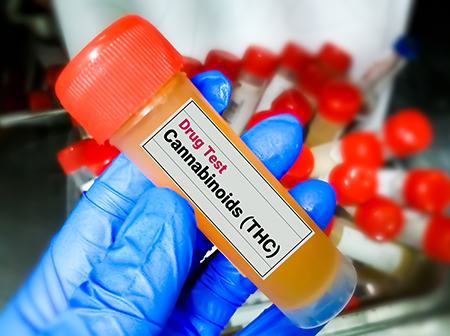 Your plan must:
Your plan must:
- apply to all safety-sensitive activities
- provide for random testing of workers in safety-sensitive roles
- specify the drugs to be tested for
- set out DAMP procedures – including any permissible levels of alcohol or a testable drug
- include a response plan
- be developed according to any requirements under the rules – including consulting affected workers.
You need to keep records of all your documentation, and your drug and alcohol management programme, as it unfolds and eventually becomes part of your organisation’s exposition.
Where?
Send off the Part 99 application form, DAMP compliance matrix, and the organisation’s DAMP plan to DAMPsubmissions@caa.govt.nz.
Use the same email address for questions.
When?
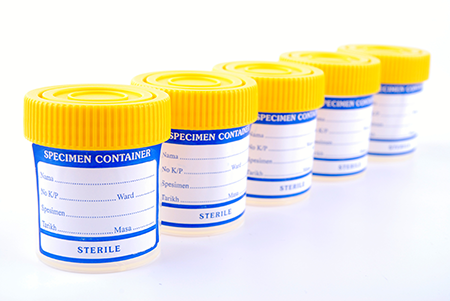 All DAMP operators in the first batch must have their drug and alcohol management plans with the CAA by close of business on 30 September, 2025.
All DAMP operators in the first batch must have their drug and alcohol management plans with the CAA by close of business on 30 September, 2025.
The CAA has to have received DAMPs from the second batch of safety-sensitive operators by close of business, 30 June 2026. Those operators are:
- Part 119 Air operators (Part 135 airline air operators and general aviation air operators.)
- Part 137 Agriculture aircraft operations
- Part 139 Aerodromes (not Tier 1-designated)
- Part 145 Aircraft maintenance organisations supporting organisations, which are not 121 and 125 air operators
- Part 141 Aviation training organisations
- Part 146 Aircraft design organisations
- Part 147 Maintenance training organisations
- Part 148 Aircraft manufacturing organisations
- Part 174 Aviation meteorological services.
Why?
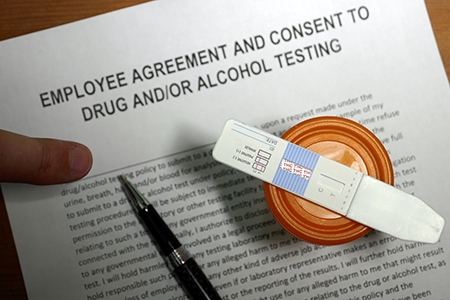 The commercial civil aviation sector is catching up with other high-risk industries in New Zealand – like the forestry sector – with the introduction of mandatory drug and alcohol management.
The commercial civil aviation sector is catching up with other high-risk industries in New Zealand – like the forestry sector – with the introduction of mandatory drug and alcohol management.
Part 115 commercial adventure aviation participants have had compulsory alcohol and drug testing since 2012.
Now it’s the turn of the rest of the commercial civil aviation sector to get on board.
Tracey Ayre, the CAA’s Manager of Operational Policy says there are two main reasons why the time for mandatory drug and alcohol management is here.
“The Transport Accident Investigation Commission has identified alcohol and other drugs as a contributing factor in a number of recent accidents and incidents. And the rest of the transport sector already have drug and alcohol management requirements so civil aviation was the outlier.”
Bobbette Odell says 24 operators have already submitted their drug and alcohol management plans.
“And some companies, whose DAMPs are not due until June 2026, have already submitted theirs.”
Joe Franklin, the CAA’s General Manager of Certification and Monitoring, believes the sector recognises that alcohol and other drug management is about safety, not just compliance.
“There’s some aviation organisations which already have alcohol and other drug testing, and they recognise that such a programme keeps their staff and passengers safe, and their commercial reputation intact.”
Joe says, however, that even organisations with an existing drug and alcohol testing programme need to submit a DAMP.
“We’re finding that operators are pretty across this,” he says. “Many of them have already been in contact with drug testing companies.”
To submit a DAMP . . .
. . . you need to:
- refer to Advisory Circular AC99-1 – Drug and Alcohol Management Plans, which provides you with guidance on the necessary components for a DAMP.
- develop or complete your organisation’s DAMP, and have it accepted by the organisation’s chief executive.
- consider using the DAMP template the CAA has produced to help operators:
DAMP template [DOCX 40 KB] - complete the relevant parts of the compliance matrix [DOCX 177 KB]
- complete the application form [PDF 247 KB]
- submit the application form, compliance matrix and supporting document(s) to DAMPsubmissions@caa.govt.nz
More helpful stuff
Here’s:
- what you need in a DAMP according to s114 of the Civil Aviation Act 2023(external link)
- what Part 99 Drug and alcohol management plans says about the rules
- DAMP information from our website, including FAQs - Drug and alcohol management

Random testing – who, how many, and how often?
So what is ‘safety-sensitive’ work? That’s work that could significantly affect the health or safety of any person on board an aircraft – or an activity that, if not performed safely, could cause or contribute to an accident or incident involving an aircraft.
But it’s not just the obvious ones like pilots or engineers, it can be anyone who has a ‘safety-facing’ role – for instance, refuelers, loaders, or ground staff.
And while an HR role, for instance, may not seem directly related to the safety of anyone on board an aircraft, this may not be hard and fast. The HR duties may involve setting pilot duty hours, so would, in that situation, be considered a safety-sensitive role.
The random bit – or ‘non-discriminatory testing’, as it’s formally called – simply means the names of the people to be tested should be drawn out of a hat, or a similar method. You shouldn’t test on the basis of anything else, like, who attended ‘that party’ last night.
It must also be done ‘without advance notification’ so no one gets a heads-up they, or their colleagues, are about to be tested.
A culture thus develops where any worker carrying out safety-sensitive activities anticipates that, on any given day, they could be selected for testing.
How often you test, and how many people you test, is up to your organisation. It will probably depend on the size of your operation, the number of its safety-sensitive workers, and the cost and feasibility of testing.
"But the regime needs to work as a deterrent."
So, as an example, testing three workers out of a muster of 300 is hardly going to be a disincentive to any staff drug abuse. But testing 10 workers every three months would be appropriate for an operation which has an average 100-200 safety-sensitive workers, who’re on site every day.
‘Non-negative’ results
What happens if a staff member returns a non-negative result? (Non-negative is one that’s either a clearly positive response to the presence of drugs, including alcohol, or the result is a bit unclear, requiring a second test.)
Tracey Ayre says the intent of the legislation is not to punish staff who return a non-negative result. “The CAA won’t be fining anyone. We’re just wanting to provide operators with the tools and ability to manage the risk of alcohol and other drug abuse in their organisation.
“But the CAA will expect a report noting the non-negative result. However, unless that result is likely to affect their medical certificate, the staff member will remain anonymous to the CAA.
“We are, also, looking for a ‘response plan’ in the organisation’s DAMP, as to non-negative results.” Part of an operator’s response would be the standing down of the person affected, from their safety-sensitive work. They could do other things, but not be able to carry out their safety-sensitive role.
A second test – particularly a saliva test – can be made just 15 minutes after the first, although if the second test has to go to a laboratory, it might be a few days to get a confirmed result.
“Random testing doesn’t have to be difficult, even if you’re a small operation,” Tracey says.
“Some small operators – say, a husband and wife ag operation with one loader driver – might wonder how they can conduct random, and unannounced testing on just three of them, but there are options. They could hire a drug testing company which would suddenly appear and test, or they could get together with other small operators, so the ‘randomness’ of the testing is across the staff of all the companies involved.”
